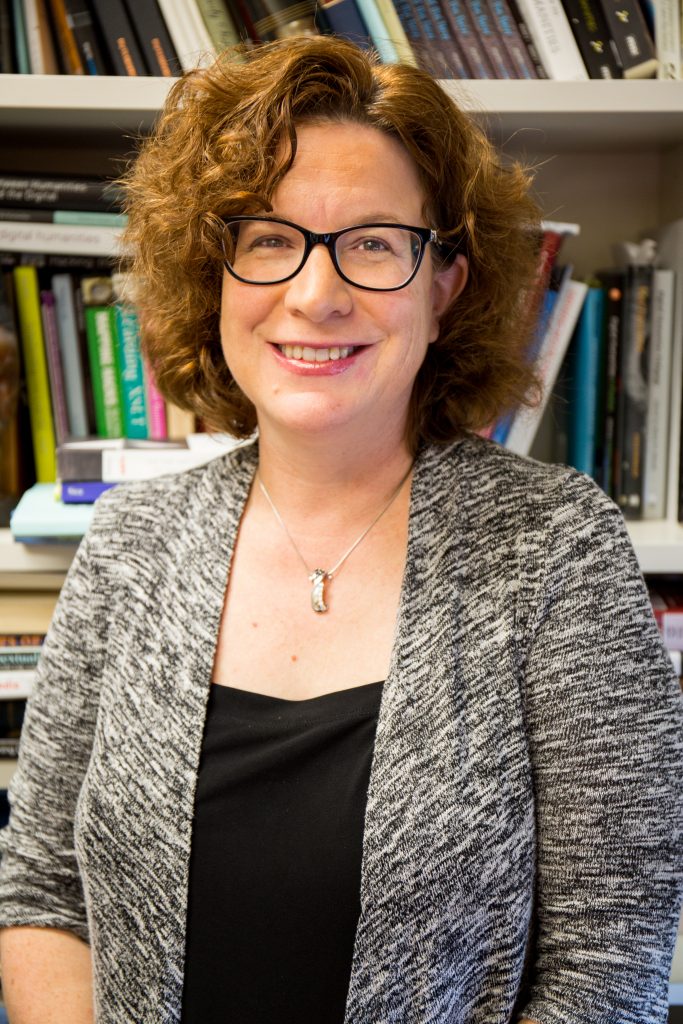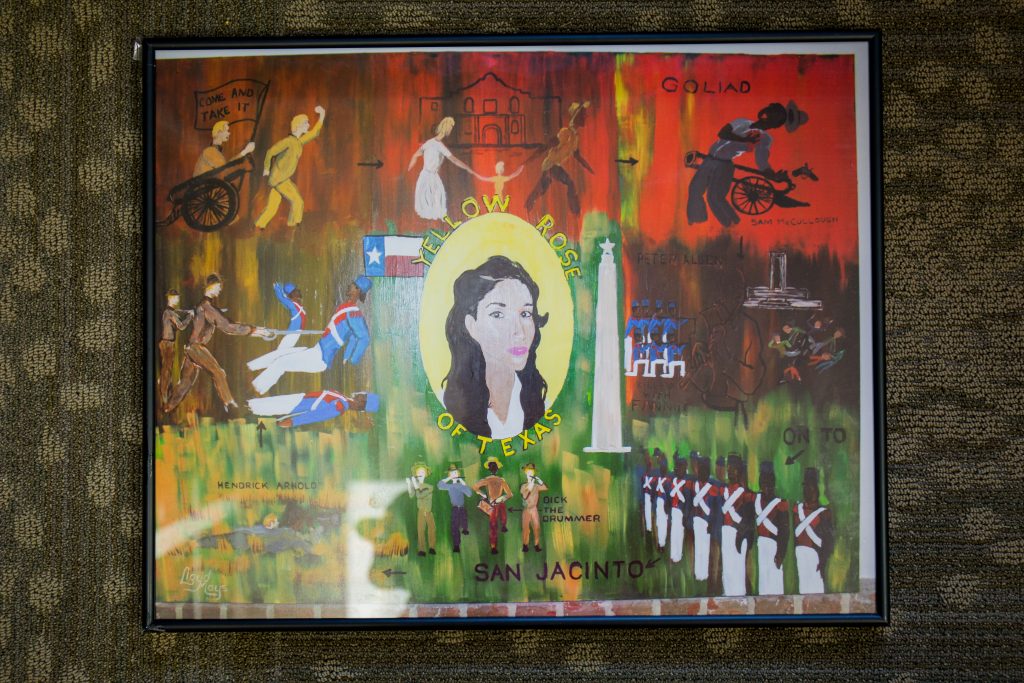The quiet “riot”
Amy Earhart heads a project documenting the 1868 race riot in the small town of Millican, Texas.

by Heather Rodriguez ’04

A poster given to Earhart and commissioned by Paul Washington, the chair for the Texas branch of Vietnam Veterans of America Minority Affairs Committee. Earhart met Washington while promoting the website project in the community.
Chances are, you’ve driven through the small town of Millican, located 15 miles from College Station. But what you probably don’t know was that in 1868, it was the site of one of the largest “race riots” in Texas. And you wouldn’t be the only one.
“A few years ago, when my husband and I were driving through Navasota, I decided to look up the history of the town,” said Amy Earhart, English professor and founder of the website Millican “Riot,” 1868. “The riot was briefly mentioned, but has since been erased.”
This gave Earhart the idea to have students in her African-American literature classes conduct their own research, culminating in this website project that Earhart hopes will spread awareness of this horrific event.
At the center of the “riot” George Brooks, a former slave who became a pastor and was sent to Millican to lead the black church. He quickly became an integral part of the community.
“He was really active in registering black voters, which may have bothered local white citizens,” Earhart said. “Because they had been part of the Confederacy, these whites had lost their voting rights and had yet to recover them, and the idea of blacks getting them first scared them.”
Brooks also officiated wedding ceremonies, including what is believed to be the first interracial marriage in Brazos County.
“Marriage was a political act at that time, because one could not have an official marriage under slavery,” Earhart said. “So right after slaves became free, lots of people got married.”
Racial tensions continued to build in Millican and surrounding areas, setting off a chain of events that led to violence.
“There’re varying stories, but one perspective is that the Klan marched through Millican to threaten the black parishioners while Pastor Brooks was preaching,” Earhart said. “In a very ‘Texan’ way, the parishioners shot at the Klan and ran them out of town.”
For protection, Brooks formed a black militia to set up a perimeter around the black community. Local whites saw the militia practicing and petitioned the Freedmen’s Bureau to take away their guns, which they declined to do. Rumors of lynchings began to circulate. The massacre began.
“No one knows who fired the first shot, but in the first round of the skirmish, the only people who were killed or wounded were black, which suggests the firing came from the whites,” Earhart said. “That set up three to four days of real fear and various rumors—that a black man named Miles Brown was lynched or that a white man was lynched. Neither of these rumors turned out to be true.”
Eventually, the local sheriff looked for reinforcements, turning to bars and brothels in Bryan for participants. They went to Millican, and several days of bloodshed began. No whites were killed.
“That’s why we put quotes around the word ‘riot;’ instead, we call it a ‘massacre,’” Earhart said. “These events are almost always called ‘riots,’ as a way to put the blame on the blacks.”
In the middle of the massacre, Brooks was mutilated and lynched. His body was found in the Brazos River bottoms, only identifiable by his lack of a particular finger. Unfortunately, Earhart said, Brazos County was known as the lynching center of Texas at the time.
“I think we have undervalued this event,” Earhart said. “People don’t understand its impact on the larger state politics at that time, because as of now, no one has really dug into it.”
Since 2014, Earhart’s undergraduate students have scoured historical newspapers, looking for any mention of the event. It wasn’t just reported in the United States, but in other countries such as Panama and Austria.
“The project tries to weave the story together from multiple perspectives, through newspaper articles, government documents, and oral histories,” Earhart said. “But the site also provides primary materials so the reader can go through this complicated event and figure out how they understand the materials. We don’t want to just give them a narrative.”
Earhart is also working with various historical societies in the community, as well as the Gregory Library in Houston. Joint efforts with the community group have culminated in a historical marker to commemorate the tragedy.
“People are really interested in this event and are rethinking our history, even when it’s painful,” Earhart said. “I think we’re getting to a point where we can have these conversations, and it’s important that we do.”
